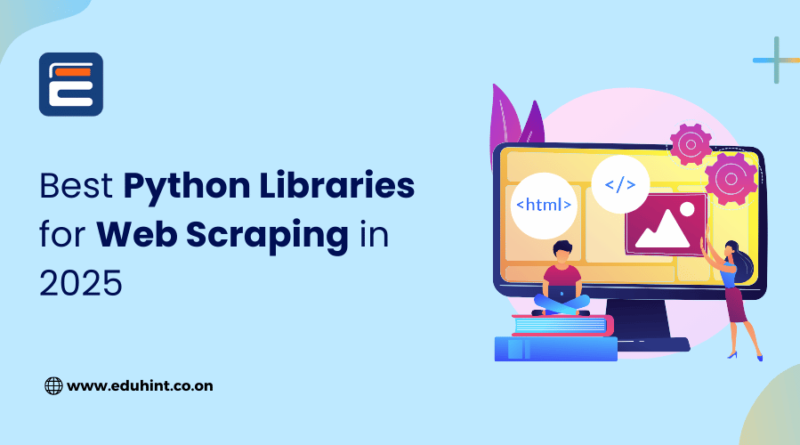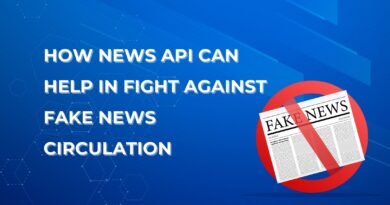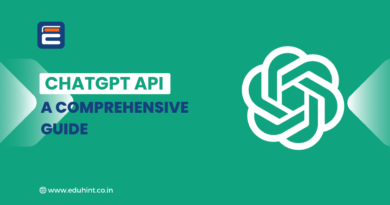5 min readBest Python Libraries for Web Scraping in 2025
Have you ever tried to get some data off a website—maybe prices, reviews, or even news articles—only to realize there’s no way to download it easily? That’s where web scraping comes in. And if you’re a fan of Python, you’re in luck. Python is one of the best languages for web scraping because it has tons of helpful libraries that make the process smooth and efficient.
In this post, we’ll walk you through some of the best Python libraries for web scraping. Whether you’re just getting started or you’re looking to level up your scraping game, these tools can save you hours of work—and probably a few headaches too.
What is Web Scraping, Anyway?
Before diving into the tools, let’s clear the basics.
Web scraping is like sending a robot to visit a webpage, grab the data you’re looking for, and bring it back to you. Imagine a personal assistant copying details from a website and pasting them neatly into a spreadsheet. That’s the idea, but way faster and more scalable.
People use web scraping to:
- Track prices on ecommerce sites
- Monitor news or social media updates
- Analyze job listings across multiple platforms
- Gather research data from online sources
Top Python Libraries for Web Scraping
Let’s explore the top Python libraries that make scraping the web faster, easier, and more reliable. Each tool has its strengths, so you can choose based on your project needs.
1. Requests — Your First Step in Scraping
At its core, web scraping starts by making a request to a webpage. That’s where Requests comes in. It’s a simple and beginner-friendly library that lets you send HTTP requests easily.
Think of it as your way of saying “Hey website, can I get your content?”
Why use Requests?
- Easy to use—great for beginners
- Handles cookies, headers, and sessions
- Pairs nicely with other libraries like BeautifulSoup
2. BeautifulSoup — The HTML Whisperer
Once you’ve got the webpage’s content, it’s usually a big, messy chunk of HTML. That’s where BeautifulSoup shines. It helps you parse HTML or XML and extract the data you actually care about, like titles, prices, or dates.
Here’s a fun way to think about BeautifulSoup: if a website’s HTML is a huge bowl of spaghetti, BeautifulSoup is your fork, helping you pick out exactly what you want.
Key Benefits:
- Flexible and easy to navigate HTML structures
- Works hand-in-hand with Requests
- Perfect for small scraping projects or quick data extraction
3. lxml — Built for Speed
If you love speed and performance, lxml is worth checking out. It’s another HTML and XML parsing tool, like BeautifulSoup, but it’s much faster and more powerful.
Why choose lxml?
- Fast and efficient, especially for large documents
- Supports XPath, which makes selecting elements easier
- Great for experienced developers who need speed
4. Selenium — For Dynamic Websites
Some websites load content with JavaScript, which means the data isn’t in the source HTML. That’s a problem for basic scrapers—but not for Selenium.
Selenium actually controls a real web browser. It can click buttons, scroll pages, and wait for content to load—just like a human would!
Use Selenium when:
- You’re scraping content loaded with JavaScript
- You need to mimic user interactions
- You need data from sites behind logins or forms
Tip: Selenium is powerful, but it’s also a bit slower and heavier. Use it when you can’t get the job done with Requests and BeautifulSoup.
5. Scrapy — The All-In-One Framework
If you’re serious about web scraping, Scrapy might become your new best friend. It’s not just a library—it’s a complete scraping framework that handles everything from making requests and parsing data to handling retries and exporting results.
I once used Scrapy to scrape an entire ecommerce site for competitor pricing. With just a few files and commands, I built a crawler that saved hours of manual work every week!
Scrapy Features:
- Built-in support for crawling and following links
- Export data to JSON, CSV, and more
- Handles retries, throttling, and logging automatically
6. Playwright — Modern Tool for Modern Web
Playwright is a newer tool designed to scrape the modern web. Like Selenium, it automates browsers—but it’s faster, supports multiple browsers (Chromium, Firefox, WebKit), and was built with performance in mind.
Why developers love Playwright:
- Handles JavaScript-heavy sites smoothly
- Can test and scrape across different browser engines
- Headless mode makes scraping faster and lighter
Choosing the Right Tool for Your Project
Still wondering what to use? Here’s a quick cheat sheet to help:
| Library | Best Use Case | Difficulty Level |
|---|---|---|
| Requests + BeautifulSoup | Simple, static websites | Beginner |
| lxml | Large datasets, speed-focused scraping | Intermediate |
| Selenium | Sites with JavaScript and interactions | Intermediate |
| Scrapy | Large, multi-page, complex crawlers | Advanced |
| Playwright | Modern web apps, browser automation | Advanced |
Final Thoughts
Web scraping doesn’t have to be overwhelming. With the right tools, even a beginner can collect valuable data right from their laptop. Whether you’re building a side project, automating tasks, or gathering research, there’s a Python web scraping library out there that’s perfect for the job.
Start small—maybe with Requests and BeautifulSoup. As you grow more comfortable, tools like Selenium, Scrapy, and Playwright can help you tackle more complex scraping challenges.
So, what data are you thinking of scraping next? Let us know in the comments below!
Happy scraping!




